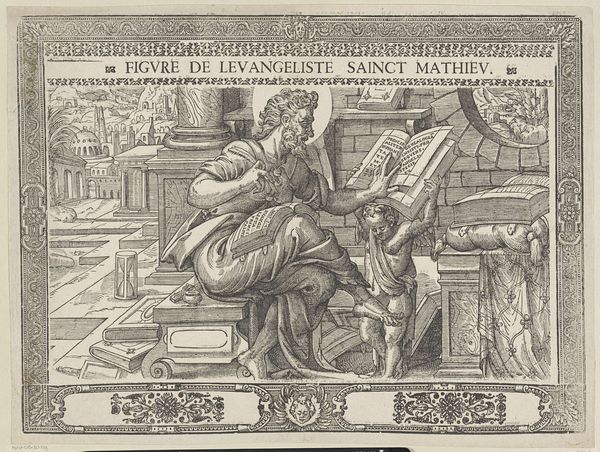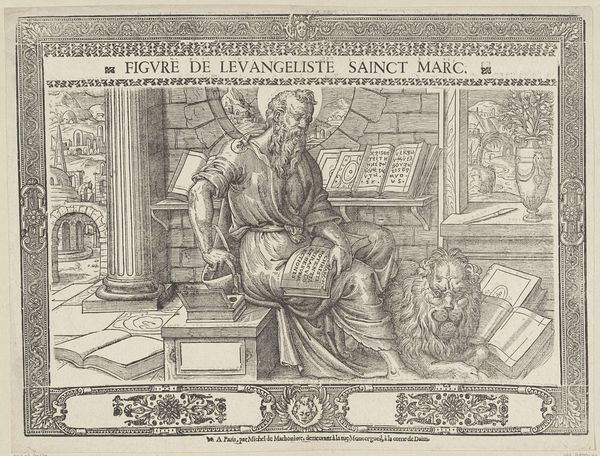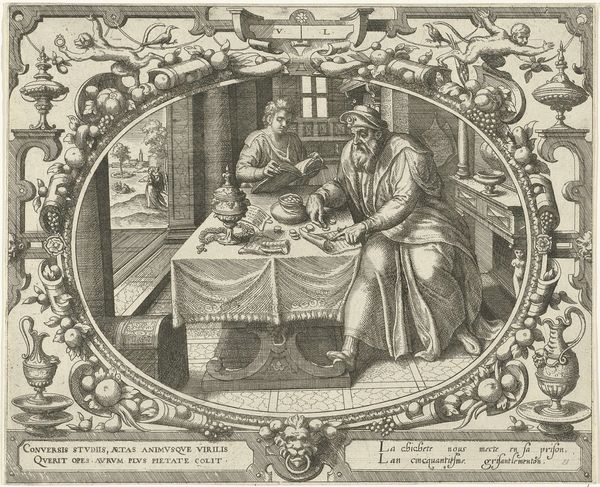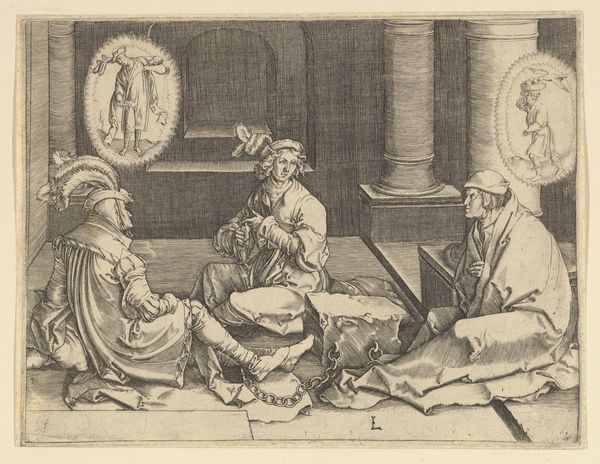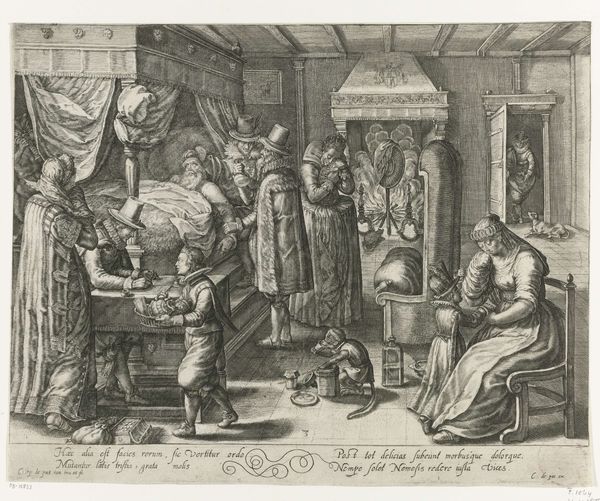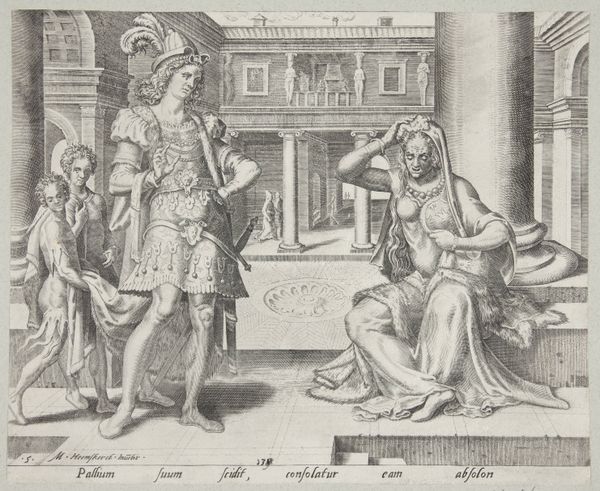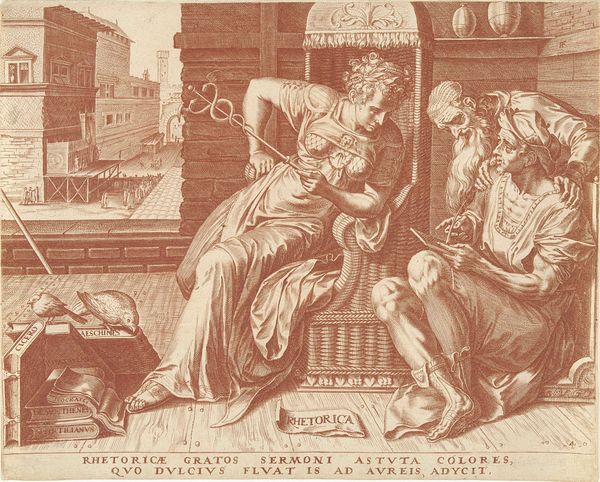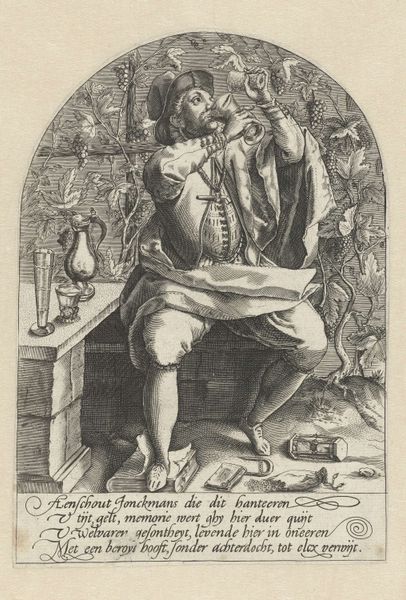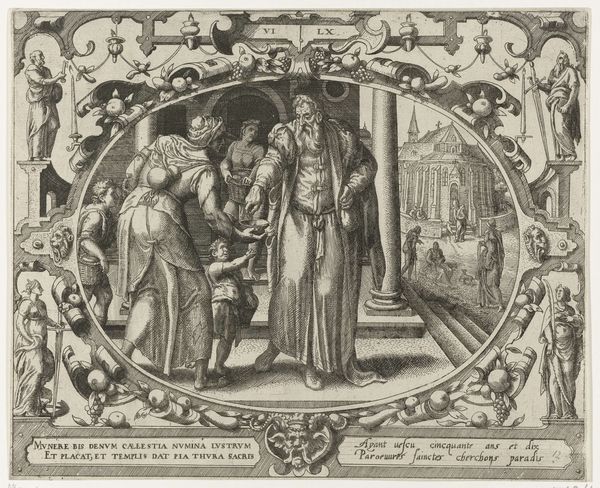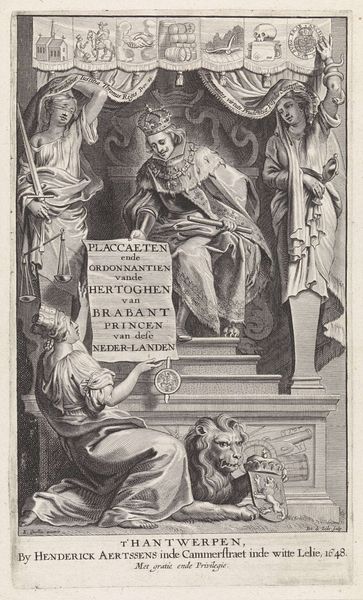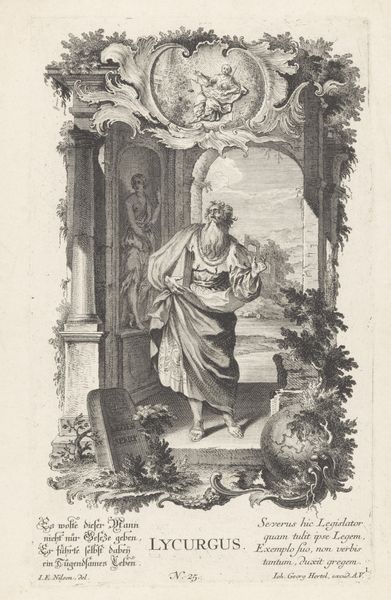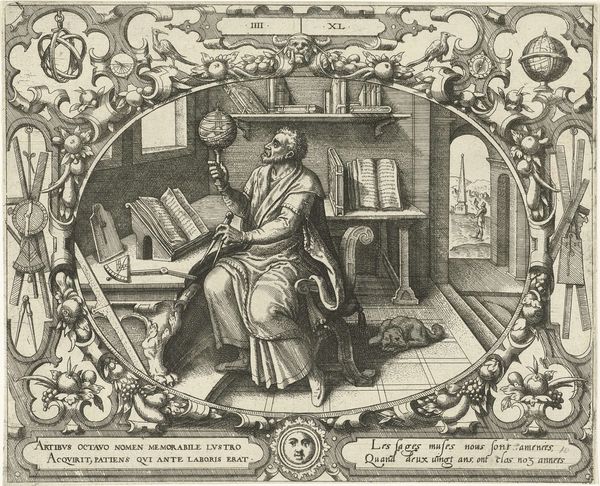
drawing, print, ink, engraving
#
drawing
#
narrative-art
# print
#
pen illustration
#
pen sketch
#
old engraving style
#
figuration
#
11_renaissance
#
ink
#
northern-renaissance
#
engraving
Dimensions: height 382 mm, width 505 mm
Copyright: Rijks Museum: Open Domain
Antoni van Leest made this engraving of Luke the Evangelist sometime in the late 16th century. The image shows the saint writing his gospel, accompanied by his symbolic animal, the ox. Prints like this one circulated widely in Europe. The printing press, a relatively new technology, allowed for the mass production of images, and artists such as Leest were able to reach a much wider audience than ever before. The image takes part in the religious conflicts of its own time. The Catholic Church used images to reinforce its teachings, while Protestants often rejected religious imagery as idolatry. To understand the full meaning of this image, we can examine the political and religious history of the Netherlands in the 16th century, the life and work of Antoni van Leest, and the visual traditions of Christian art. By examining the social and institutional context in which it was made, we can gain a deeper understanding of the cultural work this image was meant to do.
Comments
No comments
Be the first to comment and join the conversation on the ultimate creative platform.
